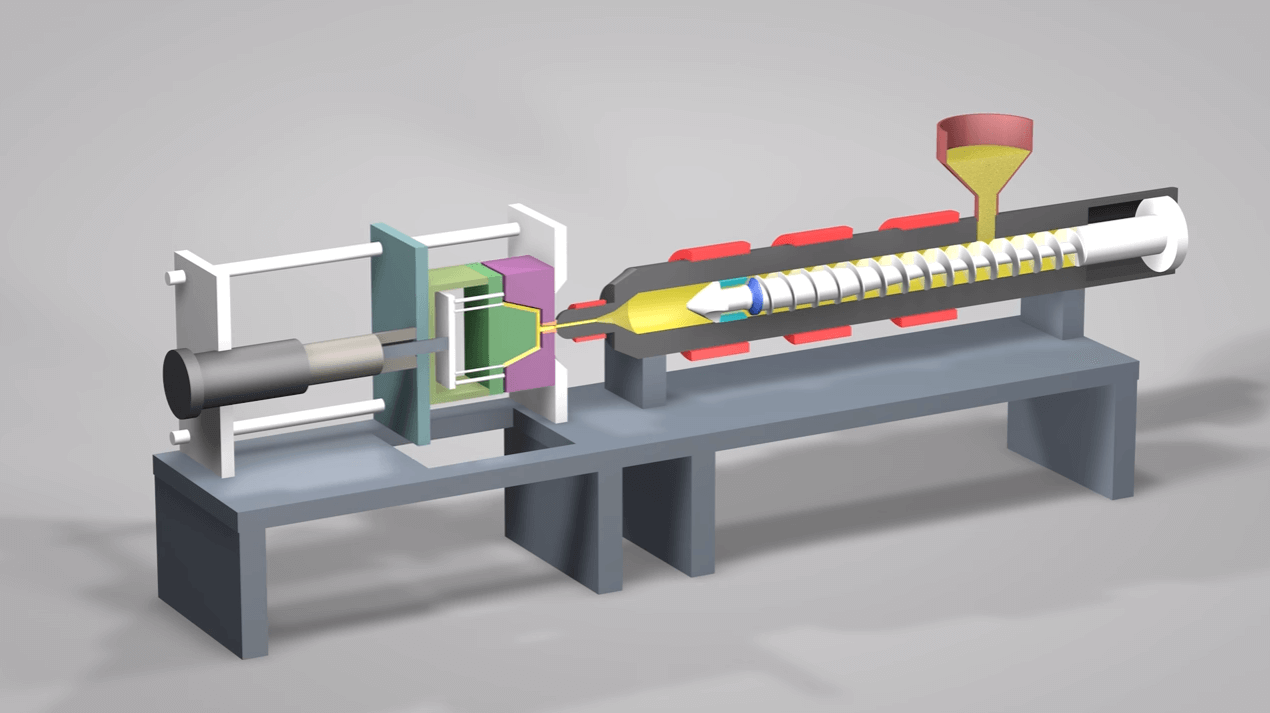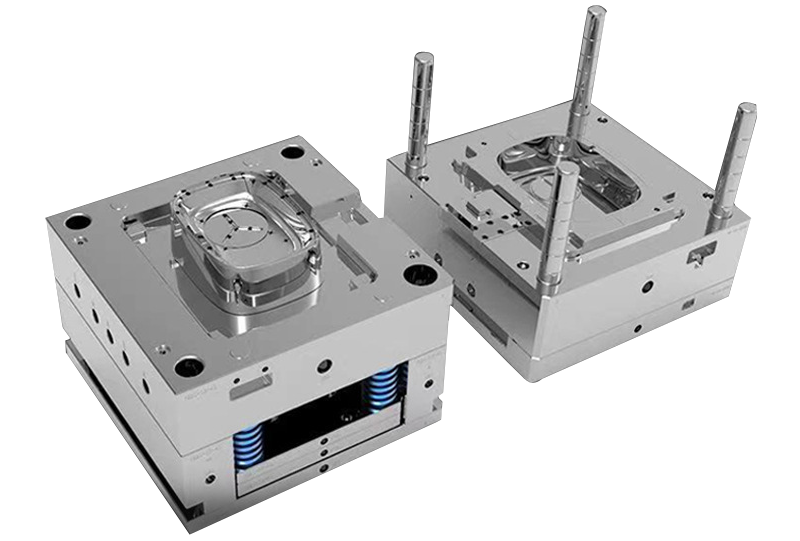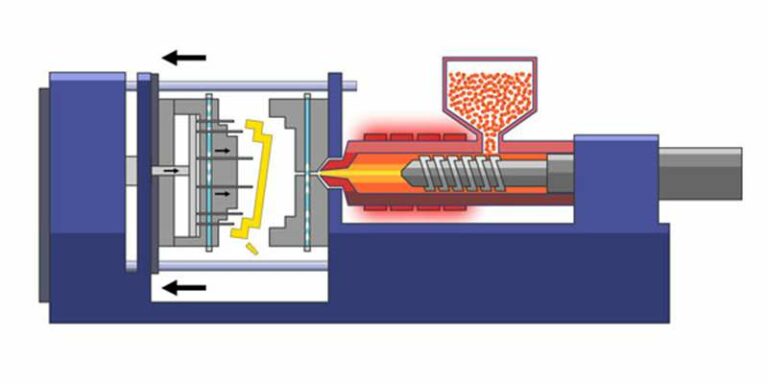How Plastic Injection Molding Drives Efficiency in Mass Production
How Plastic Injection Molding Drives Efficiency in Mass Production
Blog Article
Comprehending the Fundamentals of Plastic Shot Molding Procedures
Plastic shot molding offers as a foundation of modern manufacturing, supplying a systematic technique to generating complicated elements with accuracy. Exploring these important elements could reveal how even small modifications can lead to considerable improvements in production outcomes, elevating questions about the possibility for technology in this well established procedure.
What Is Plastic Injection Molding?
Plastic shot molding is a widely utilized production process that changes polycarbonate and thermosetting materials right into precise and complicated forms. This technique is preferred for its capability to generate high volumes of the same get rid of outstanding precision, making it a crucial approach in various industries, including automotive, customer products, and medical gadgets.
The process involves melting the chosen plastic material and infusing it right into a mold under high pressure. The mold, made to the requirements of the desired part, enables the molten plastic to form as it cools down and solidifies. When the product has actually solidified, the mold is opened, and the completed element is expelled.
Plastic shot molding offers several advantages, consisting of reduced waste, consistency in production, and the ability to incorporate elaborate styles that may be testing with various other producing approaches. Furthermore, it sustains a broad series of products, each providing special residential properties that can be customized for details applications. As industries continue to introduce, plastic shot molding remains at the leading edge, making it possible for the growth of innovative items that satisfy progressing consumer needs.
The Shot Molding Process
The shot molding procedure is an advanced technique that entails numerous vital stages to generate high-quality plastic components. Plastic pellets are fed right into a warmed barrel where they are melted into a viscous liquid. This molten plastic is after that infused under high pressure into a precision-engineered mold, which forms the product into the wanted type.
Once the mold and mildew is filled up, the plastic is enabled to solidify and cool, taking the shape of the mold and mildew tooth cavity. Cooling time is crucial, as it affects the cycle time and the final buildings of the shaped component. After sufficient air conditioning, the mold opens up, and the completed component is expelled making use of ejector pins.

Materials Made Use Of in Injection Molding
Various materials can be made use of in the injection molding process, each offering distinct residential or commercial properties that accommodate particular applications. The most typically used materials include thermoplastics, thermosetting plastics, and elastomers.

Thermosetting plastics, like epoxy and phenolic materials, undergo a chemical change during the healing process, leading to a stiff, stringent structure. These materials are excellent for applications requiring high warm resistance and architectural integrity, commonly made use of in automobile components and electrical insulators.
Elastomers, including silicone and rubber-based materials, supply flexibility and durability. Their one-of-a-kind homes make them appropriate for applications that require elasticity, such as seals and gaskets.
Furthermore, specialized materials like bio-based plastics and compounds are getting grip for their ecological benefits and improved efficiency qualities, expanding the scope of injection molding applications in numerous sectors. Recognizing the homes of these products is crucial for selecting the proper type for certain projects.
Advantages of Injection Molding
Shot molding sticks out as a highly effective manufacturing process that offers countless advantages for generating complex components with accuracy. One of the most significant benefits is the ability to produce detailed layouts that would be difficult or impossible to achieve with various other approaches (Plastic Injection Plastic Injection Molding Molding). The process enables tight resistances and comprehensive attributes, making certain high-grade components
In addition, shot molding is recognized for its rapid production capabilities, making it a perfect option for high-volume production. When the mold and mildew is developed, parts can be read review produced promptly, reducing preparations and boosting general performance. This effectiveness not only lowers manufacturing prices however likewise provides an one-upmanship out there.
The adaptability of products made use of in shot molding further boosts its charm. A large range of thermoplastics and thermosetting polymers can be utilized, allowing makers to choose materials that finest fulfill their specific demands, including warm, versatility, and toughness resistance.
Moreover, the process decreases waste, as excess product can often be recycled and recycled. This sustainability element adds to a decreased environmental influence, making injection molding a responsible production selection. Generally, the advantages of shot molding make it a recommended method for numerous sectors.
Elements Influencing Item High Quality
While many aspects can influence product quality in injection molding, comprehending these components is crucial for accomplishing ideal results. Key aspects include product option, processing criteria, and mold and mildew layout.
Product option plays an important function, as different polymers show one-of-a-kind properties that influence flowability, strength, and thermal security. Inadequate product selection here can result in problems such as warping or insufficient filling.
Handling specifications, including cycle, stress, and temperature level time, have to be diligently managed. Variants in these setups can cause incongruities in part dimensions and surface coating. For example, exceedingly high temperature levels may cause degradation of the polymer, while inadequate pressure can lead to brief shots.
Mold design is equally important, as it identifies the flow of the molten plastic and the cooling procedure. Inadequately made molds may cause irregular air conditioning prices, resulting in dimensional inaccuracies and recurring tensions.

Final Thought
In final thought, plastic injection molding acts as a critical manufacturing process that makes it possible for the effective manufacturing of high-grade components. Mastery of the shot molding procedure, consisting of the understanding of materials and the impact of numerous aspects on item high quality, is crucial for achieving optimal results. The benefits of this approach, such as cost-effectiveness and design versatility, additional underscore its relevance throughout several markets, solidifying its condition as a recommended choice for high-volume production.
Plastic injection molding serves as a cornerstone of modern-day manufacturing, providing a systematic technique to generating complex parts with precision.Plastic injection molding uses a number of advantages, consisting of reduced waste, uniformity in manufacturing, and the capacity to integrate complex styles that may be testing with other producing approaches (Plastic Injection Molding). As sectors continue to introduce, plastic shot molding remains at the center, allowing the advancement of sophisticated products that satisfy developing customer demands
The injection molding process is an innovative strategy that involves several key stages to produce high-grade plastic elements.In verdict, plastic injection molding offers as an essential manufacturing process that enables the efficient manufacturing of top notch components.
Report this page